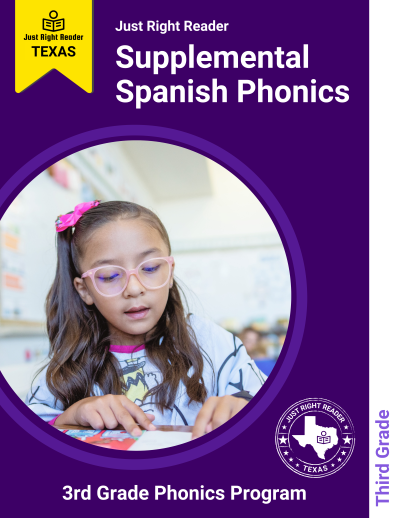Evaluation for 5.E.2a
Materials include a systematic sequence, as outlined in the Spanish language arts TEKS, for decoding and encoding multi-syllabic words depending on syllable stress (sílaba tónica), diphthongs, hiatus, the different word types (agudas, graves, esdrújulas, and sobreesdrújulas) and accent marks.
The materials include a systematic sequence, as outlined in the Spanish language arts TEKS, for decoding multisyllabic words depending on syllable stress (sílaba tónica), diphthongs, hiatus, the different word types (agudas, graves, esdrújulas, and sobreesdrújulas), and accent marks. The "TEKS Correlation Table" lists the progression of decoding standards and links to aligned lesson plans and decodable texts. For example, Set 5, "Los hermanos Rodríguez," provides decoding practice with palabras graves, such as difícil and lápiz, which require stress on the penultimate syllable and an accent mark. Additional resources focus on diphthongs and hiatus combinations such as úa, úe, and úo, using words such as grúa, dúo, and actúa. In the decodable text "Ángela se queda dormida," students decode palabras esdrújulas (e.g., último), which place stress on the antepenultimate syllable and follow rules for written accents. Instruction begins with simpler syllable structures and gradually introduces more complex word types and accent mark rules, aligning with the TEKS progression. The materials include a systematic sequence, as outlined in the Spanish language arts TEKS, for encoding multisyllabic words depending on syllable stress (sílaba tónica), diphthongs, hiatus, the different word types (agudas, graves, esdrújulas, and sobreesdrújulas), and accent marks. Students practice encoding palabras agudas, graves, and esdrújulas through a sequenced set of spelling activities that include targeted word lists and decoding routines. For example, in "La donación de juguetes," students encode multisyllabic words with suffixes and stress on the penultimate syllable, such as usados. Additional lessons provide students practice with encoding diphthongs and hiatus patterns using words such as doy, grúa, and flúor. The sequence supports students in developing accurate spelling by gradually applying their knowledge of phonology, morphology, and orthography.



